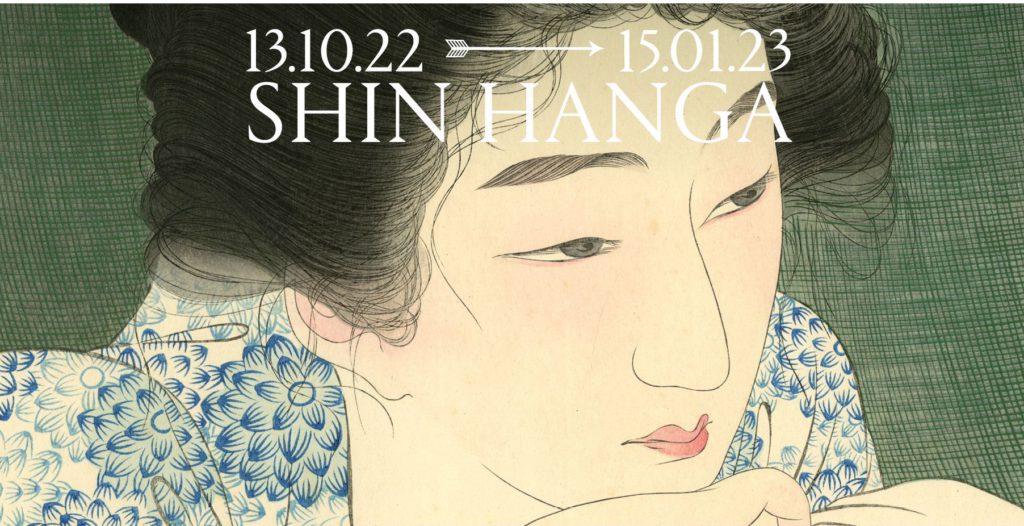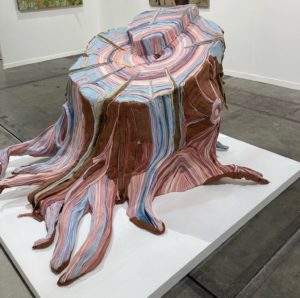Shin Hanga: the delicacy of Japanese prints at the Royal Museum of Art and History in Brussels
Translated by Deepl
Read the original article
The “Shin Hanga” exhibition presents magnificent examples of the ‘New Print’ movement, which includes modern Japanese art from 1900 to 1960. You have a few days left (until 15 January 2023) to enjoy it.
Japanese prints have been known in the Western world since the second half of the 19ème century. Since the opening of Japan to American and Western ships, prints have attracted collectors from all over the world, but mainly Americans and Westerners.
Several exhibitions at the MRAH had already presented unique Japanese works in a chronological way. The Shin Hanga exhibition is therefore a logical continuation of the ‘Ukiyo-e’ exhibition held in 2016-2017. The Uliyo-e movement spanned the 17th to 19th centuries, with a quartet of artists (draughtsman, engraver, printer and publisher).
The “Ukiyo-e” movement is a Japanese art movement of the Edo period (1603-1868) that includes not only original folk and narrative painting, but also, and above all, Japanese woodblock prints. The reign of the Tokugawa Shogunate brought an era of peace and prosperity to Japan, which resulted in the loss of influence of the military aristocracy of the daimyos, and the emergence of an urban bourgeoisie and merchants. This social and economic evolution was accompanied by a change in artistic forms, with the birth of ukiyo-e and printmaking techniques that allowed for inexpensive reproduction on paper, a far cry from the paintings of the aristocratic Kanō school.
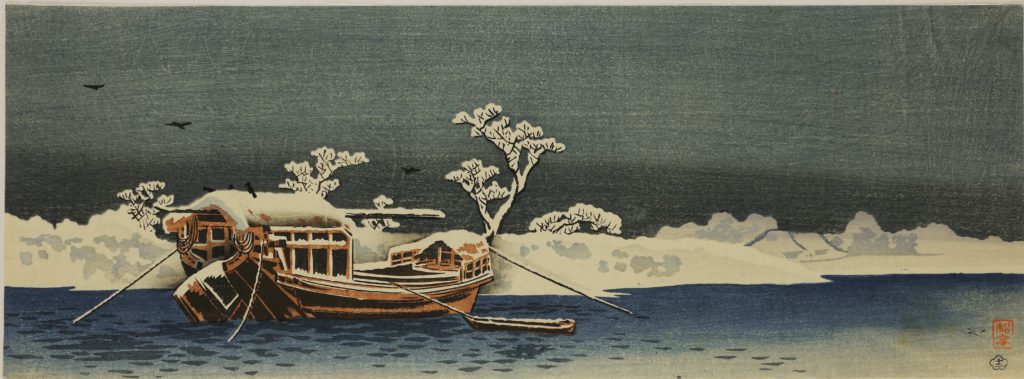
The “Shin Hanga” movement, on the other hand, was a revival of traditional printmaking (Ukiyo-e) at the beginning of the 20ème century during the periods Taisho (1912-1925) and Shōwa (1926-1989). This movement flourished between 1915 and 1942 and resumed in 1946, after the Japanese defeat in the Second World War. It is based on the system inherited from ukiyo-e (xviie century-xixe century) with the traditional quartet (designer, engraver, printer, publisher).
Around 1900, the production of traditional Japanese woodblock prints was in increasing decline. It was confronted with new reproduction techniques that were entering the territory. The techniques of xylography and photography were increasingly used for lower quality productions, “mass market” magazines.
The publisher Watanabe Shōzaburō (1885-1962), realised these changes, but nevertheless remained faithful to traditional art production. All the more so as he realised that the appeal of Japanese prints was not waning in the West. èmeMany dealers were still fond of them, and indeed many artists in Montmartre and Montparnasse were inspired by the delicate lines and transparent colours of these Japanese works, which fed the trend of the early 20th century, known as “Japonisme”. But the influences were felt in both directions.

Thanks to the craftsmen, the artists of the Shin Hanga movement are free of technical constraints, so that they can be concerned only with their own work. Inspired by the impressionists, they integrate western elements such as the play of light and personal expression while focusing on traditional themes. Shin-hanga wanted to convey the atmosphere, whereas ukiyo-e dealt with multiple popular themes.
Watanabe Shõzaburõ, always a guarantor of the manufacturing traditions of the past, gradually surrounded himself with artists of great talent, whose designs he had made using wood printing techniques.
The beginnings are hesitant, while taking up the classic themes of Japanese prints such as landscapes, bijin (beautiful women), kabuki actors, flowers and birds, he also chooses the theme of Japan that is modernizing for the shi-hanga prints.
These prints are attractive because of their new aesthetic and the high quality of their production.

In this exhibition, we will find extremely renowned artists such as Kawase Hasui (1883-1957), Itō Shinsui (1898-1972), Ohara Koson (1877-1945), Kasamatsu Shirō (1898-1991) and Komura Settai (1887-1940).
The works on display come from the three major Shin Hanga collections (two private Dutch collections and the collection of the publisher Watanabe Shōzaburō, a leading figure in this movement, whose works have been loaned by his grandson.
The Japanese print is made using a woodcut process (xylography) from an artist’s drawing. By combining the fine execution of ancient prints with traditional, poetic, and increasingly meaningful themes, Watanabe Shōzaburō truly launched this new mode of artistic expression.
Watanabe Shōzaburō’s success inspired other publishers, resulting in the production of more or less 3000 works. This movement is characterised by its exceptional technical quality, and its novelty. The use of pigments, paper types, special effects and the extreme attention to detail of Watanabe Shōzaburō and his colleagues made these new prints a highly prized luxury product.
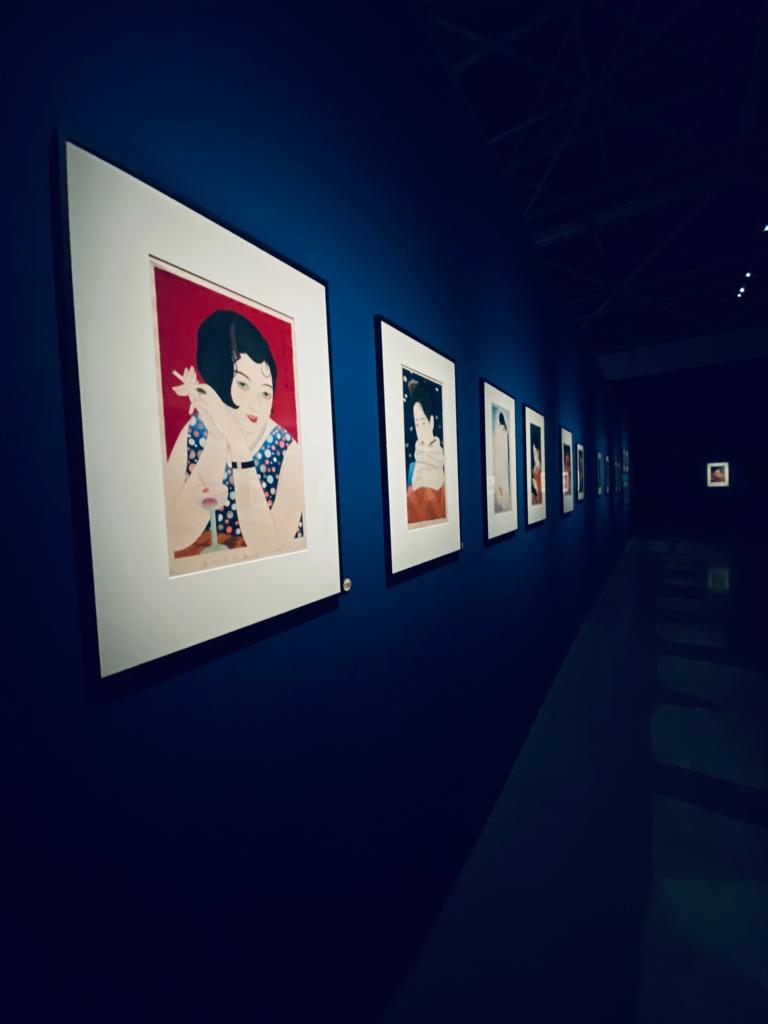
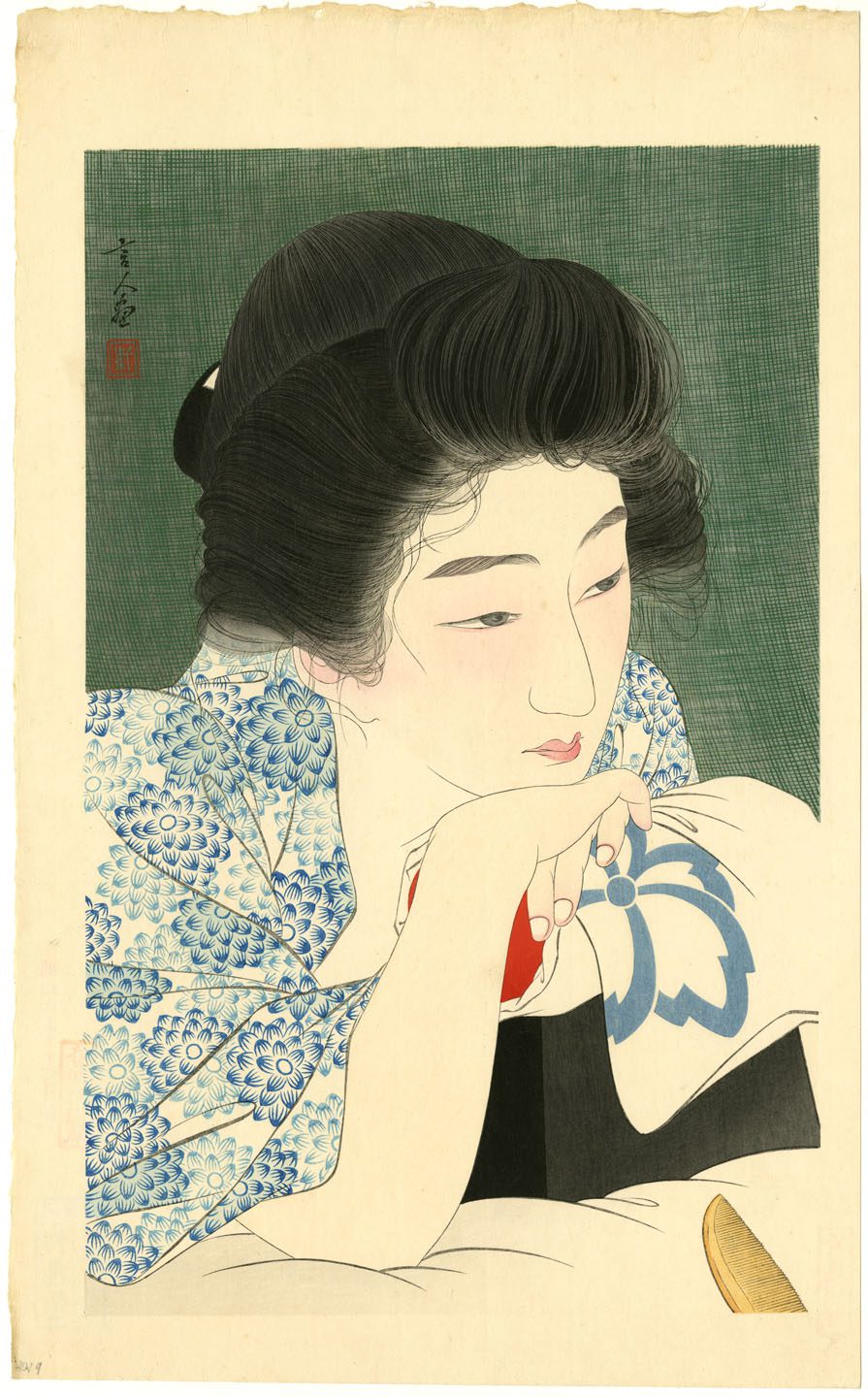
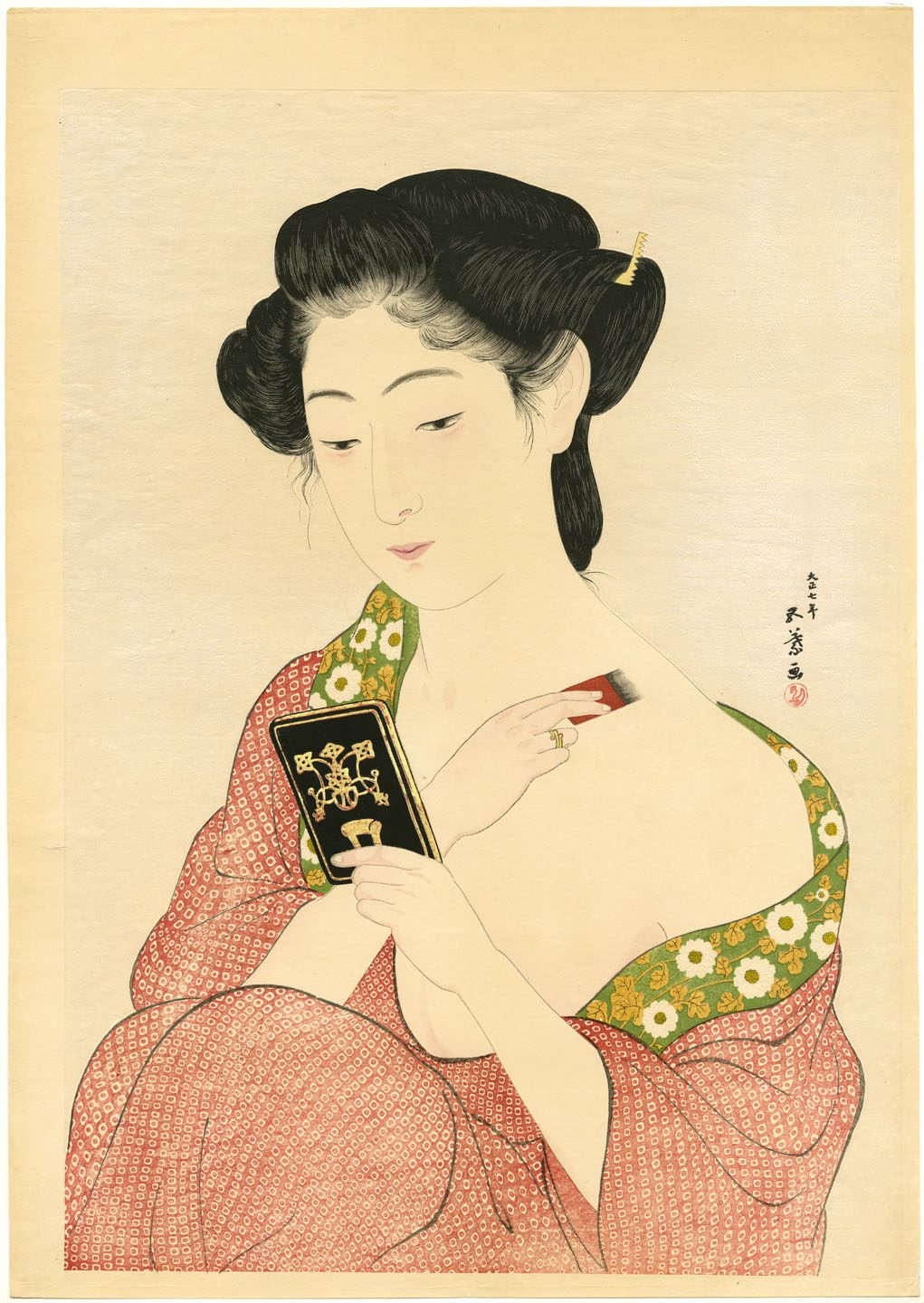
2) Hashiguchi Goyō, Woman Applying Make-up, 1918 © Private collection, The Netherlands
The exhibition presents the works in chronological order.
It begins with the time of the first experiments until 1916. This is followed by an introduction to the two main genres, namely landscapes and portraits of women.
These two genres were divided into two periods: before and after the Kantō earthquake of 1 September 1923. This natural disaster is a real dividing line as large stocks of prints, sketches and printing wood were destroyed.
It is difficult to imagine today the impact this natural disaster had on Japanese society. More than 105,000 people died or are missing. Following the earthquake and the tsunamis that followed, a veritable social chaos descended on Japan, facilitated by the spread of false rumours, the action of the military police and the political police also traumatised the already shocked Japanese.
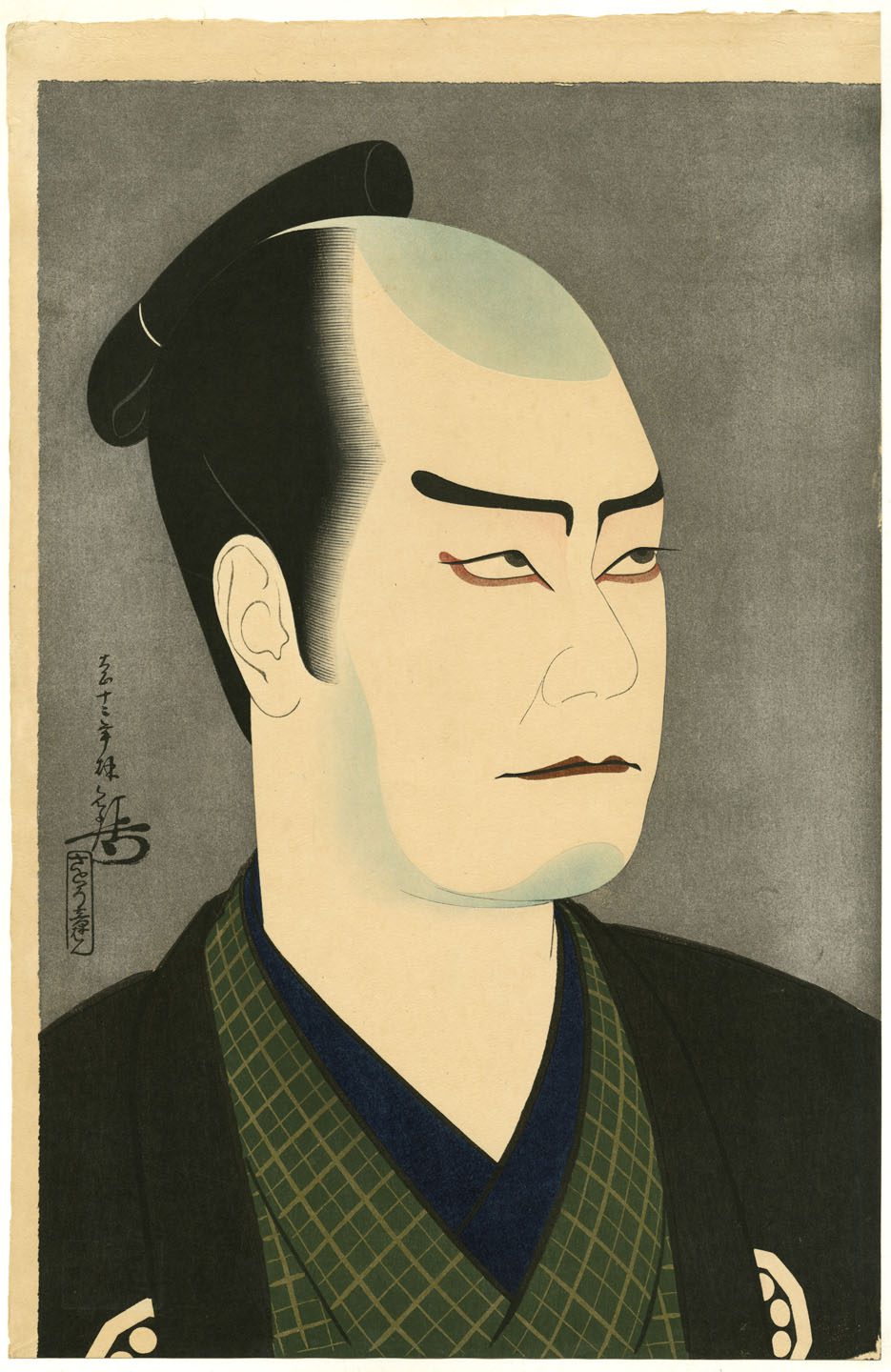
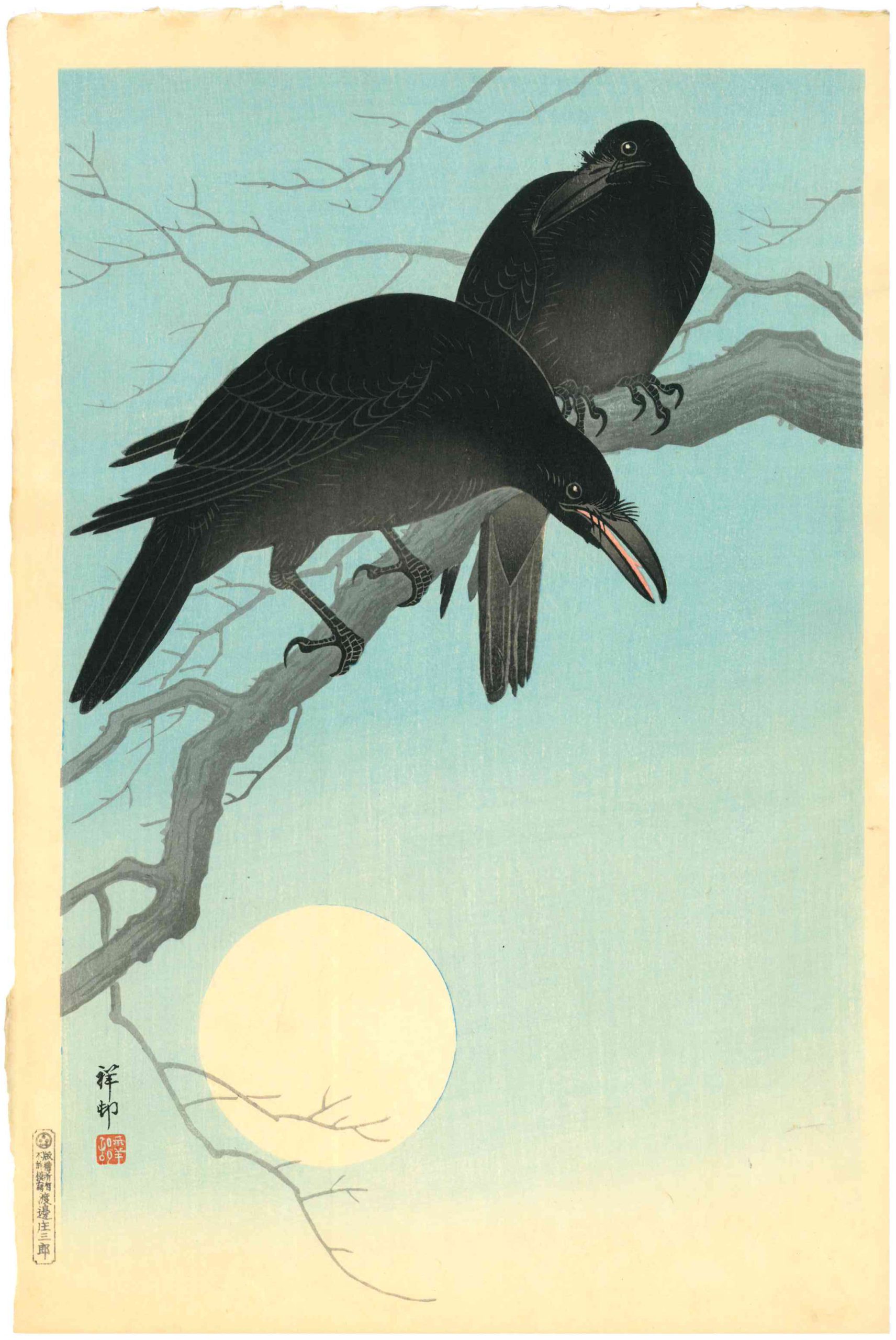
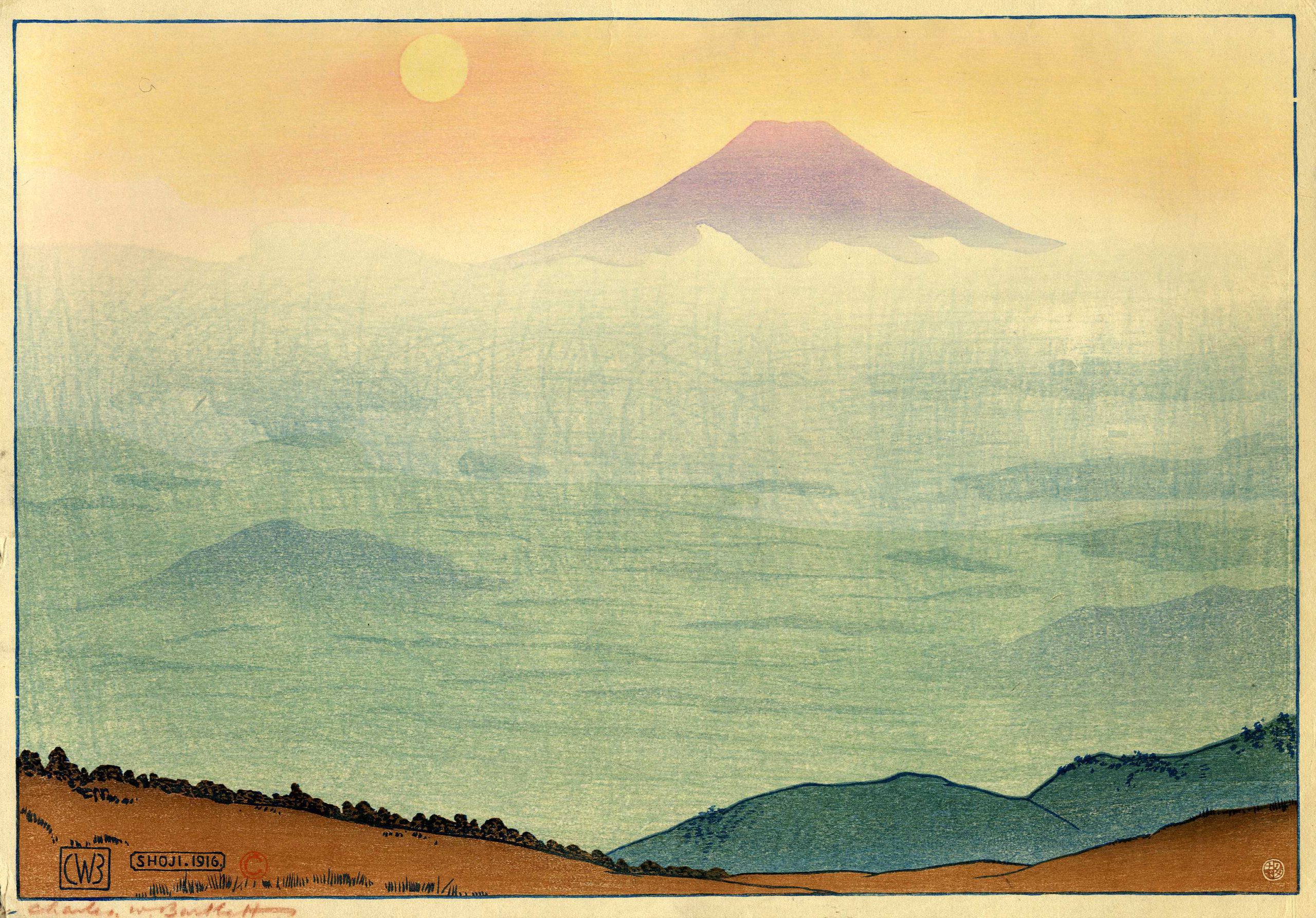
2) Ohara Koson (Shōson) (1877-1945) – Corbeaux au clair de lune ©S.Watanabe Shōzaburō
3) Charles William Bartlett, Le mont Fuji vu depuis le lac Shōji1916 ©S.Watanabe Color Print Co.
There is also a section on Kabuki (a highly codified epic form of traditional Japanese theatre, characterised by the actors’ make-up and complex stage devices).
A section on nature and then on modernity. The last section is devoted to the technical aspect of print production, while developing the specificities of the Shin Hanga tradition.
Watanabe Shōzaburō was able to promote prints in the United States, thus enabling the financial longevity of the artists working with him. He thus contributed to the prosperity of the movement but his death in 1962 marked, unfortunately, the end of this movement.
So don’t hesitate to take advantage of the last moments of this magnificent exhibition, offering works with incomparable colour palettes.
Practical information
Exhibition Shin Hanga – modern prints from Japan 1900-1960
Until 15 January 2023
At the Museum of Art and History – Parc du Cinquantenaire 10, 1000 Brussels
Information via Info@mrha.be or +32 (0)2 741 73 31
